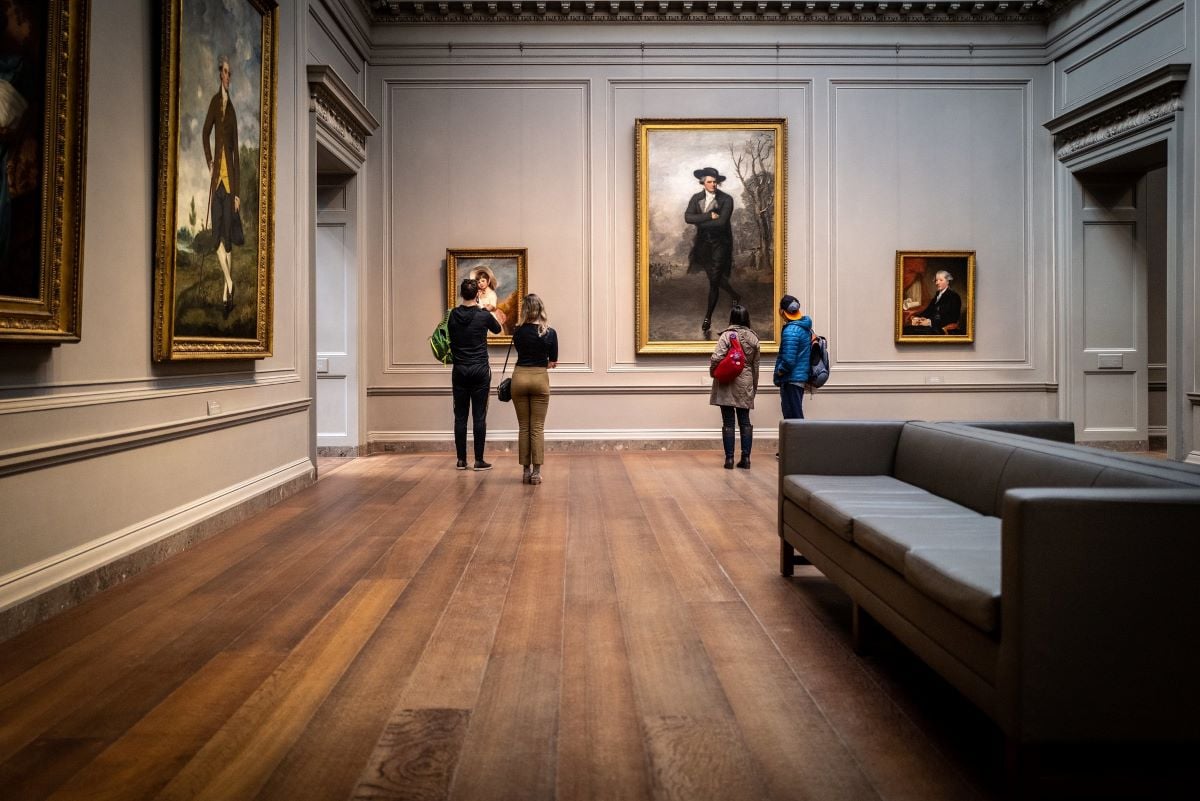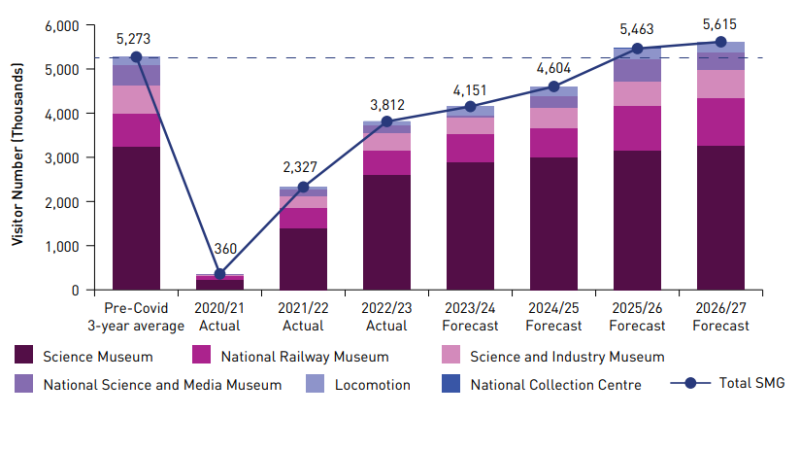
The National Gallery says it is still experiencing financial pressures attributable to Covid
Photo: Phil Roeder/Creative Commons
Museum and gallery visits remain 25% down on pre-pandemic
Fewer international tourists since the pandemic identified as one of the reasons why visitor levels for leading museums and galleries are yet to fully recover.
Visitor levels to leading culture institutions in England are continuing to recover but remain significantly down on pre-pandemic levels, latest data shows.
Annual reports for the 2022/23 financial year published by the Science Museums Group, Tate Gallery, the National Gallery, and the Victoria and Albert Museum show that attendance figures have recovered to around 75% of pre-pandemic levels.
The Science Museum Group has said it expects levels to recover by 2025 while the National Gallery says it does not foresee visitor levels returning to pre-pandemic levels "for a number of years".
READ MORE:
- Art Fund: 'Rainy day for museums' prompts rise in grants
- Economic value of museums and galleries on the rise
The Science Museum Group's annual report reveals there were 3,812,000 visitors to its five museums during 2022/23.
Although this represented a 63.8% rise on the 2,327,000 visitors in 2021/22, it remains 27.7% down on the pre-Covid three year average of 5,273,000 visitors.
It said that while visits from UK audiences to the museum are now on a par with pre-pandemic, the number of international visits to the Science Museum in London are at 38% of pre-pandemic levels.
 Source: Science Museum Group annual report 2022/23
Source: Science Museum Group annual report 2022/23
The annual report for Tate Gallery paints a similar picture. While the number of visits to all Tate galleries increased from 3,070,000 in 2021/22 to 6,000,000 in 2022/23, levels remain 27% down on the 8,260,000 visits recorded in 2019/20.
"Global travel restrictions have eased, but the UK as a whole continues to see lower levels of inbound tourism," the report states.
"At Tate, there has been some recovery, reflecting the strength of Tate Modern in particular as a tourist attraction, where international visits in 2022/23 accounted for 41% of all audiences, against 50% in 2019-20.
The report adds that the cost-of-living crisis has also impacted visitor numbers.
"Tate has felt the effect of rising energy prices and wider economic pressures," the report states.
"In addition to the impact on the costs to the business, both directly in increasing energy bills and passed on in the procurement of goods and services, it has been observable that the rising cost of living has affected audiences and spend in Tate’s shops and restaurants."
Financial pressures
The annual report for the National Gallery shows that it had 3,030,000 visitors in 2022/23, compared with 1,130,000 in 2021/22.
"Even following the easing of lockdown restrictions in 2021/22, the Gallery still experienced financial pressures attributable to Covid 19 during 2022/23," the report states.
"Although our UK audience has returned to pre pandemic levels, international visitors have been slower to return, and as a result self-generated income has not yet fully recovered.
"We were therefore grateful to receive the final tranche of support from DCMS in response to Covid-19 of £2.2m which enabled us to continue to operate effectively during the year.
"Looking forward, the gallery continues to plan prudently within its means in the face of what is still forecast to be a challenging economic climate."
The report added that its planning assumptions "do not have visitors returning to pre pandemic levels for a number of years", but it is conmfident that through a combination of careful planning, use of existing reserves, and new income generating opportunities it can deliver its three-year plan.
'Slow pace of recovery'
The annual report for Victoria and Albert Museum revealed that there was significant year-on-year growth in visitor numbers and associated self-generated income in 2022/23, with income from exhibition ticket sales up 27%, and onsite retail sales up 79%.
However, despite 69% growth in visitor numbers in 2022/23 compared with 2021/22, the overall level "only reached roughly three-quarters of pre-pandemic levels".
It said this reflected the "slow pace of recovery being experienced by the cultural sector as a whole, particularly in respect to international tourism".
"Visitor numbers – and behaviour – continued to be affected by the pandemic, and the rising cost of living created an additional challenge," the report states.
"We found maintaining and growing our membership scheme a particular challenge in this environment. The weak pound sterling helped to drive an improvement in inbound tourism, but pre-pandemic levels remain unmatched."
Join the Discussion
You must be logged in to post a comment.